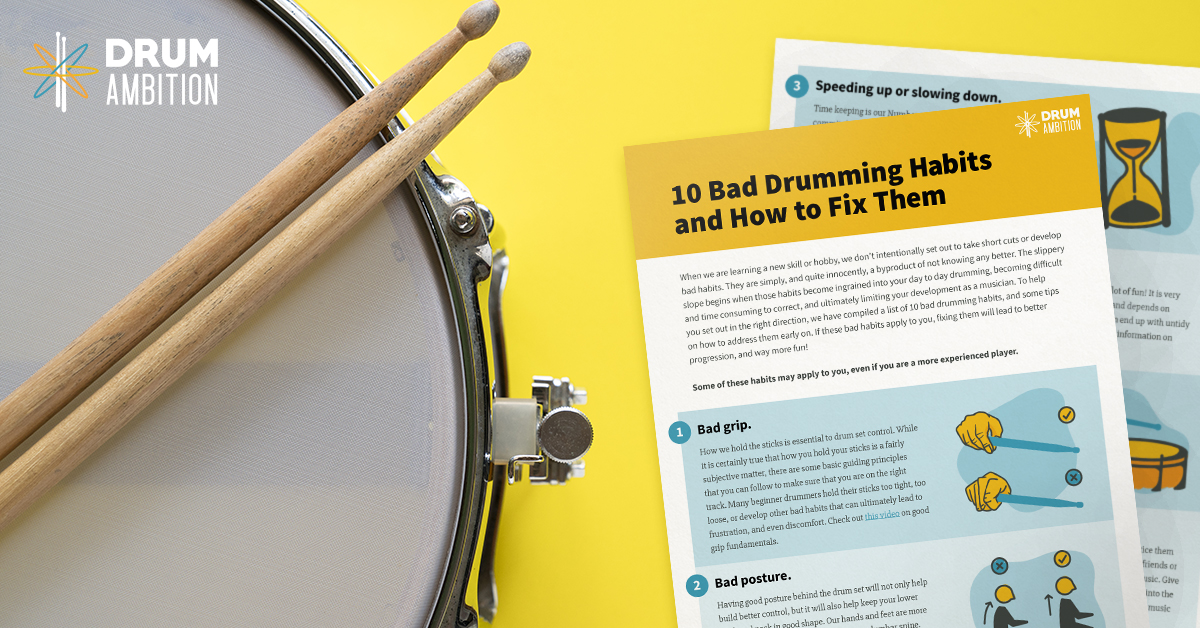With the holidays drawing nearer, the sight of a drum set on the Christmas list can ring alarm bells for many people!
One of the biggest concerns for many aspiring drummers (and those sharing space with them) is the inescapable fact that drums are loud! Electronic drums are great but are not everyone's first choice, and unless you have the luxury of a large property or a soundproof room, your drums and cymbals are likely to be heard around the house. Soundproofing is uneconomical and largely ineffective unless you have the big bucks to do it right, and practice pad sets that emit no sound at all can be far from inspiring for newbie tub thumpers. Good news! There are solutions.
Helpful related articles.
How to assemble a drum set from the box - A video guide.
How to get a great sound from your new drum set.
Sound control - Practical means of controlling drum set volume.
1. Muffle the bass drum.
Nowadays, many drum sets feature "pre-damped" bass drum heads as a selling point. While this is undoubtedly a value-added feature, the extra plastic ring applied to the inside of the drum head acts only to reduce the ring or resonance of the drum and does little to reduce volume significantly. The best solution is to pack the bass drum with a household pillow or old blanket that is big enough to touch both the front (the resonant head) and back (the batter head) of the bass drum. Not only will this significantly reduce the volume, but it will also feel more controllable to play than a floppy, undamped drum head. It also sounds better in many cases, particularly on entry-level starter drum sets.
For those who may be uncomfortable with the unscientific approach above, you could always insert an EQ Pillow - small dampening pillows designed by various drum companies. These are good but won't dampen the drum as much as a household pillow or cushion. On the upside, they are relatively low cost, look aesthetically better, and usually attach to the shell with a velcro strip to stop the pillow from shifting around.
2. Use tone rings and dampening gels on the snare drum and toms.
There are products available that reduce the resonance of the snare drum and toms. Resonance is the term used to describe the ring that the drum makes after it has been played. Controlling this is desirable in home practice situations, as it will contribute to reducing the overall volume. Gels, such as the Moongel featured in Drum Ambition videos, are small gel pads that attach directly to the drum head. Tone rings are plastic rings, usually about 1-2 inches in width, that sit atop the drum head, held in place by the rim of the drum. These reduce tone and volume, and the thicker the tone ring, the more dampening provided. While gels can be applied to any size of snare drum or tom, tone rings are manufactured to fit specific drum sizes, so it is essential to know the diameter of your drums before ordering these.
3. Consider noise reduction pads.
There may be times when you want to practice as volume-free as possible - late-night practice or first thing in the morning, perhaps. Drum mutes (noise reduction pads) are a great solution, and you can generally find them online or at your local drum store. These are soft pads (typically rubber or a rubber/soft material composite) that sit on the drums and significantly reduce the volume. You can still hear the drum's tone beneath, and the stick response is pretty good too. The best news is that they are also available for cymbals and eliminate the ring and wash that un-muted cymbals will produce.
4. Sticks, rods, and brushes can make a difference.
Playing with a lighter-weight stick can make a difference to the sound too. Although arguably marginal, playing with a 7A stick will be less abrasive than some heavier weights. Playing with rods is a great way to reduce volume. These are a collection of thin dowels or strands of wood bundled together to create a lightweight rod. All drummers should have a pair of these in their stick bag because, aside from volume control, they provide an excellent feel for softer acoustic music. Playing with brushes will further reduce volume, but it's not really what they are designed for, and unless you are playing jazz or softer music, this will probably not be the most inspiring way to practice.
5. Tape and towels are not ideal.
Using tape on the drum heads is not uncommon - it is an old studio trick from the '60s and '70s that is still used today. The problem is that once the tape is on the drum head, there is no moving it without creating sticky and unsightly residue. Towels will significantly muffle the drums, but they don't feel good to play on and will not give you the desired stick bounce to play rudiments, or creative drum fills.
Hopefully, you will by now be reassured by the options that are available to you. Drums are one of the most rewarding instruments to play, and volume, although a legitimate consideration, should not prevent aspiring drummers from enjoying their instrument. Equally, family members should not have to run for cover. There are good solutions, and if you are still unconvinced, consider checking out electronic drums!
Recommended products and where to buy them.
Many items discussed here can be purchased via our affiliate links in this article.
We are here to help!
If you have any questions about this article, please feel free to email [email protected].



